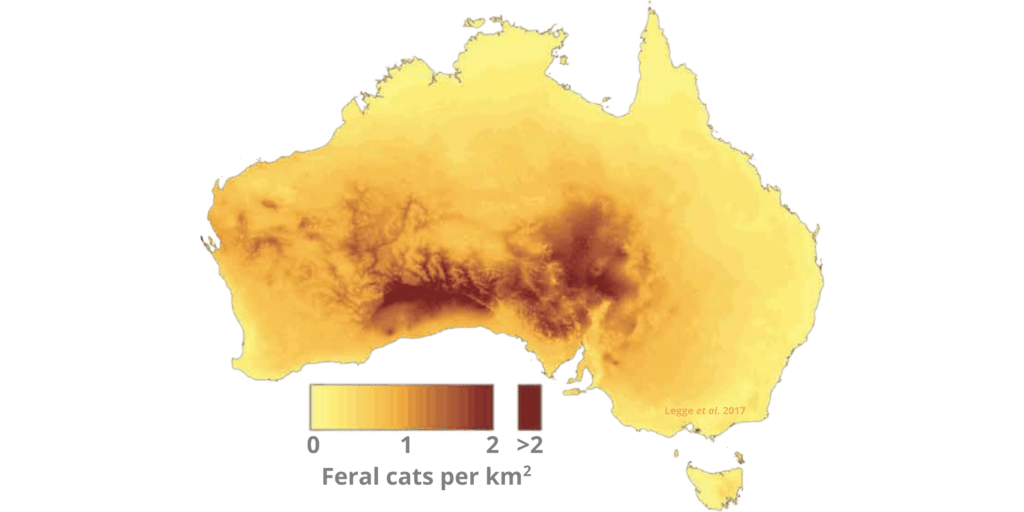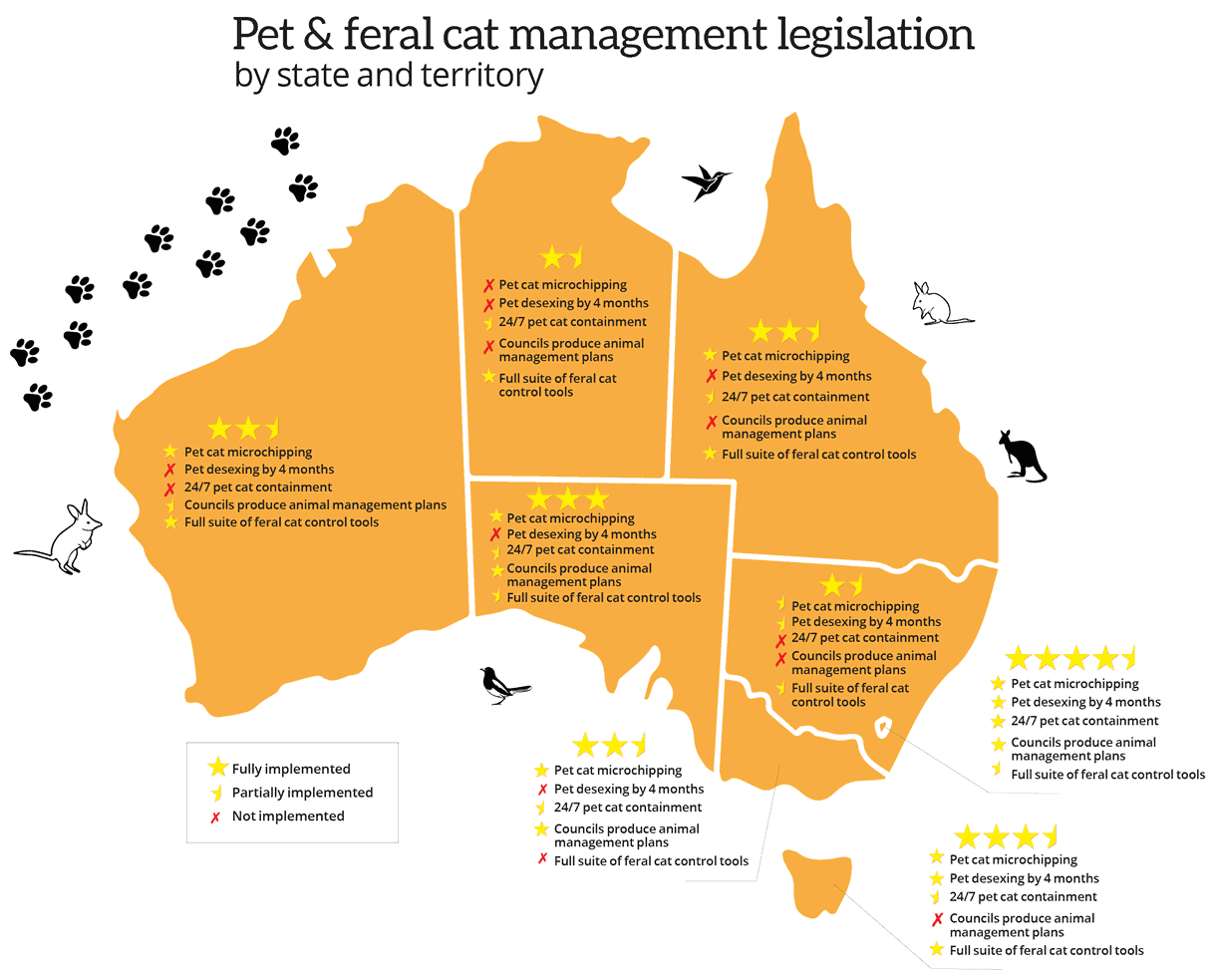OUR WORK
Affectionate, playful, mischievous, relentless, prowling, predator. Cat-lover or not, none of us can escape the devastating impacts they are having on Australia’s wildlife. Cats inhabit almost all of Australia and continue to drive many native species toward extinction.
Our Work | Cats in Australia
Cats in Australia
Cats have caused more environmental damage in Australia than any other continent in the world.
Cats are believed to have first arrived in Australia in 1788 on the First Fleet. Within 70 years, they had covered the continent and are now spread across more than 99% of Australia’s land area.
Sadly, Australian wildlife, like endangered numbats and night parrots, have proven particularly susceptible to feral cats and roaming pet cats. Cats are the perfect hunter, being patient, silent and adaptable. Not only are so many of our native animals the perfect-sized prey for cats, they’re also at a big disadvantage since they aren’t used to being hunted by something like a cat.
Every Year Cats in Australia Kill ...
mammals
birds
reptiles
frogs
What Can Be Done?
Australia needs stronger laws, policies and programs to protect our wildlife from cats.
We have worked with several of Australia’s leading researchers to identify ways to better protect threatened species from feral cats and foxes by undertaking island eradications, providing more control tools and removing legal barriers for humane feral cat removal efforts.
We are also working to ensure that pet cats are kept safe at home, and that there is support through local, state and federal government for effective cat containment.
We want to ensure every state allows the full suite of feral cat control tools, so that land managers have the best chance of driving down feral cat numbers. Roaming pet cats are also diminishing local populations of birds, small mammals and reptiles. We need to ensure Australia’s 4.9 million pet cats are kept safe at home and not allowed to roam.
To win government action, we need to show governments pet cat containment and effective action on feral cats is popular! Show your support for action on cats by taking the pledge.
Cats have already driven 27 native animals to extinction since colonisation and now threaten at least 124 more native species at risk of extinction.
To save the surviving bilbies, numbats, night parrots, and all of the other native animals we love in this country, we must act urgently. We must ensure governments strengthen their efforts to protect wildlife from cats and we must build more support across Australia.
Pledge support for stronger action on roaming pet cats and feral cats across Australia
To protect native wildlife & prevent further cat-driven extinctions in Australia, we need mandatory microchipping and desexing for all cats by 4 months of age, 24/7 pet cat containment, assistance for Australian pet cat owners, increased investment in and tools for feral cat management, continuation of the feral cat coordinator and implementation of a new national cat threat abatement plan, and increased uptake of new control tools such as Felixer grooming traps.
Learn More About the Impacts of Feral Cats and Roaming Pet Cats
Feral cats have been an environmental disaster for Australian wildlife. But just how bad has their impact been and what can be done to stop feral cats driving even more native animals into extinction?
There are more than 4.9 million pet cats in Australia. With this number growing in recent years, it is important to consider how we best keep pet cats, and our native species, healthy and safe.
The Dark Side of Cats in Australia
Free-roaming cats, both feral and pet, are highly efficient predators. On top of the over 30 native species that cats helped push into extinction since colonisation, including the pig-footed bandicoot and the Macquarie Island parakeet, they now imperil at least another 123 nationally threatened species.
In fact, every day matters. On average, cats kill 2.92 million mammals, 1.67 million reptiles, 1.09 million birds, 0.26 million frogs and 2.97 million invertebrates every 24 hours.
The stats are scary, and cats will continue to drive species toward extinction unless we intervene.
‘Now, a new wave of mammal extinctions is looming across northern Australia, as intense fires and overgrazing by feral cattle, pigs and buffaloes remove shelter and make it easier for feral cats to hunt. … Often travelling long distances (up to 30km), cats target recently burnt areas for intensive hunting. An influx of cats can decimate the survivors of fire.’
– Andy Sheppard (CSIRO) & Andreas Glanznig (CISS)
How Many Cats Are in Australia?
At any given point in time, there are between 7.0 – 11.2 million cats spread across 99.9% of the continent:
- 1.4 – 5.6 million feral cats in the bush depending on rainfall conditions
- 0.7 million feral cats in urban areas
- 4.9 million pet cats


The density of feral cats in the Australian bush during average dry conditions (slide the slider to the right) and wet conditions (slide the slider to the left). Map published in Legge et al. 2017.
Fact Sheet: The impacts of cats on Australian wildlife
A fact sheet developed by the Threatened Species Recovery Hub.









